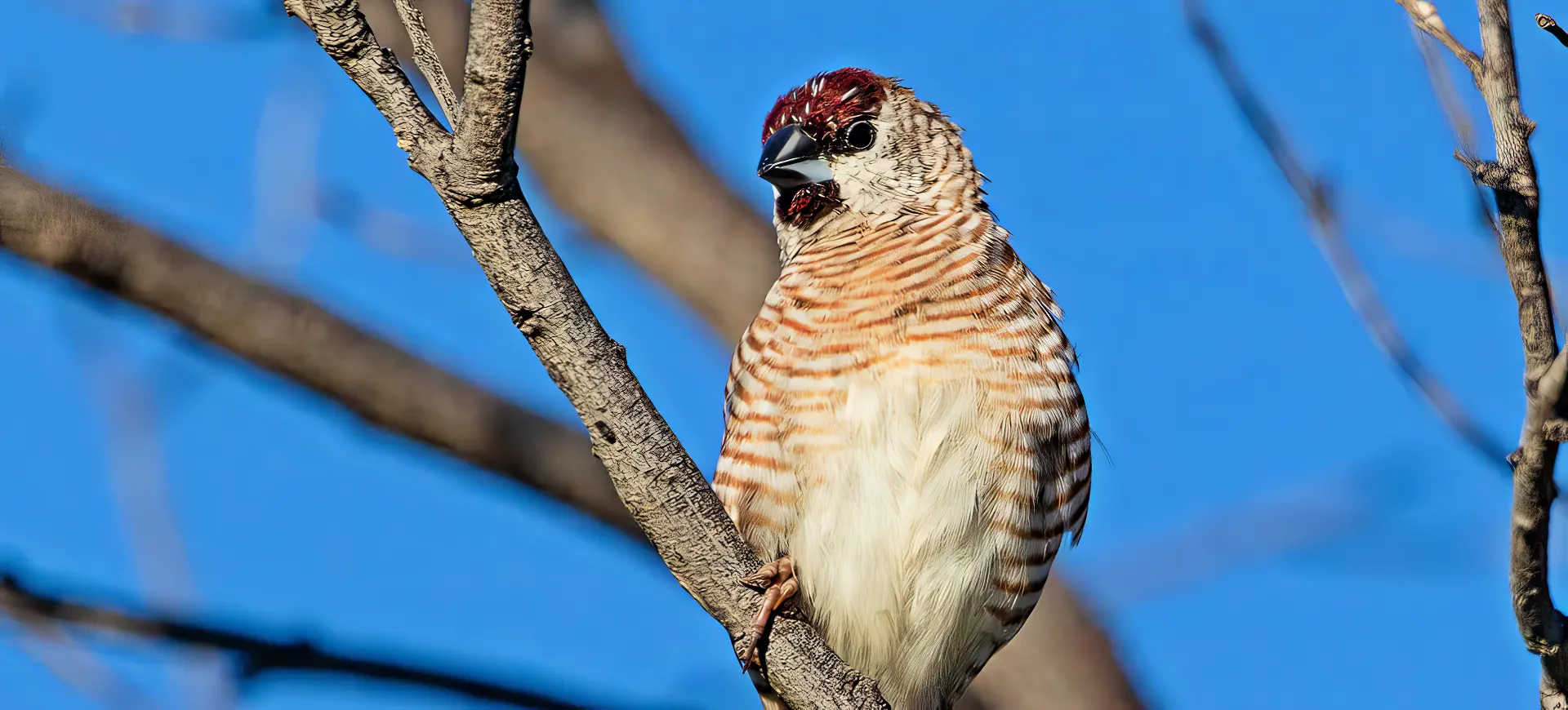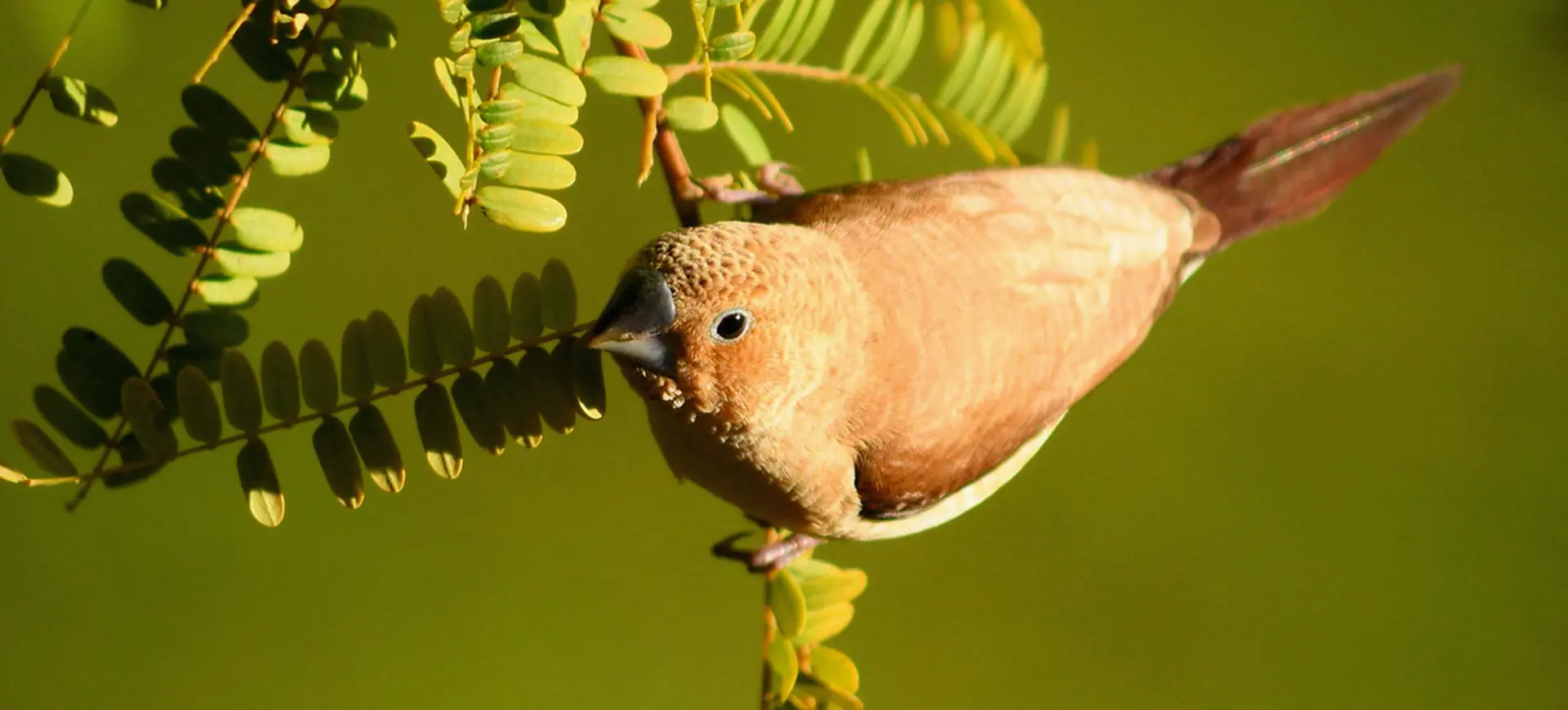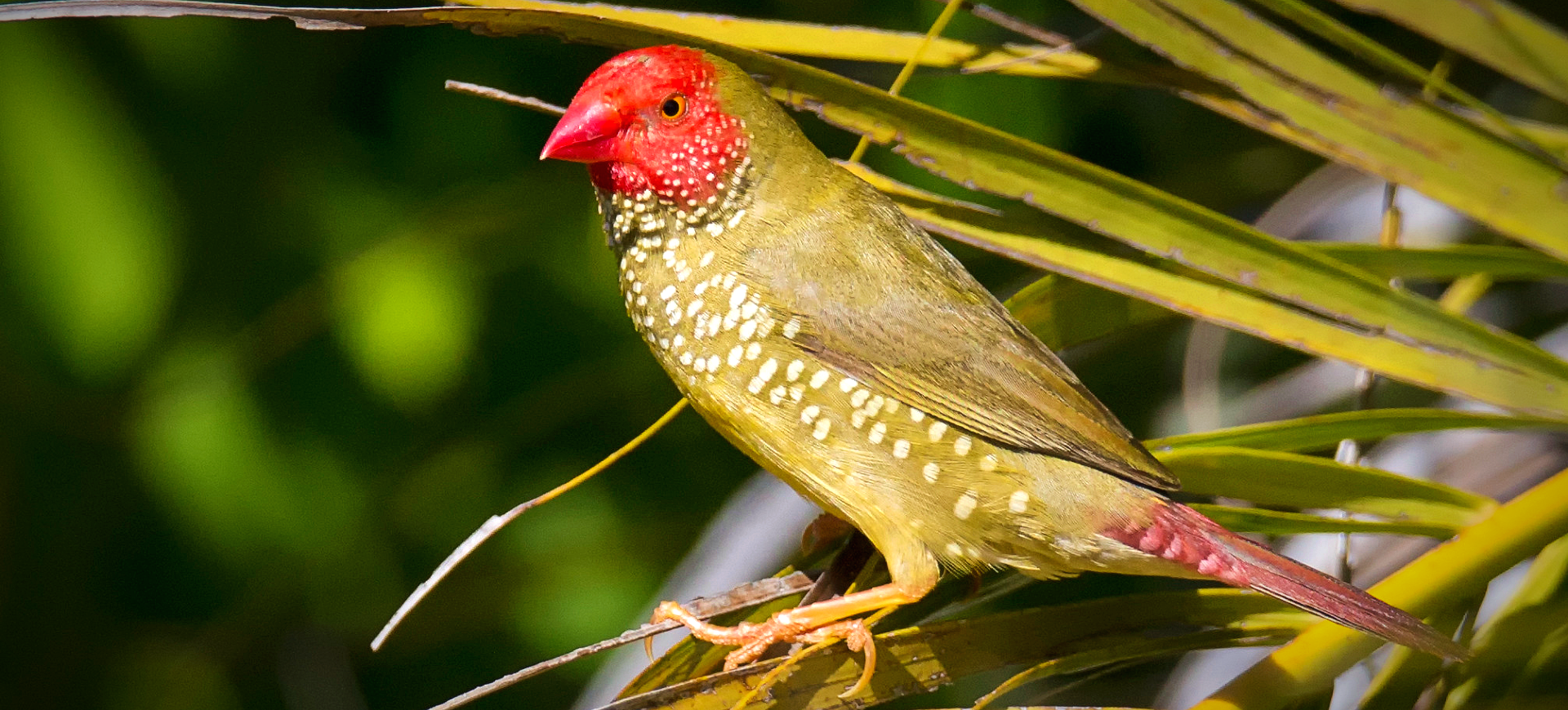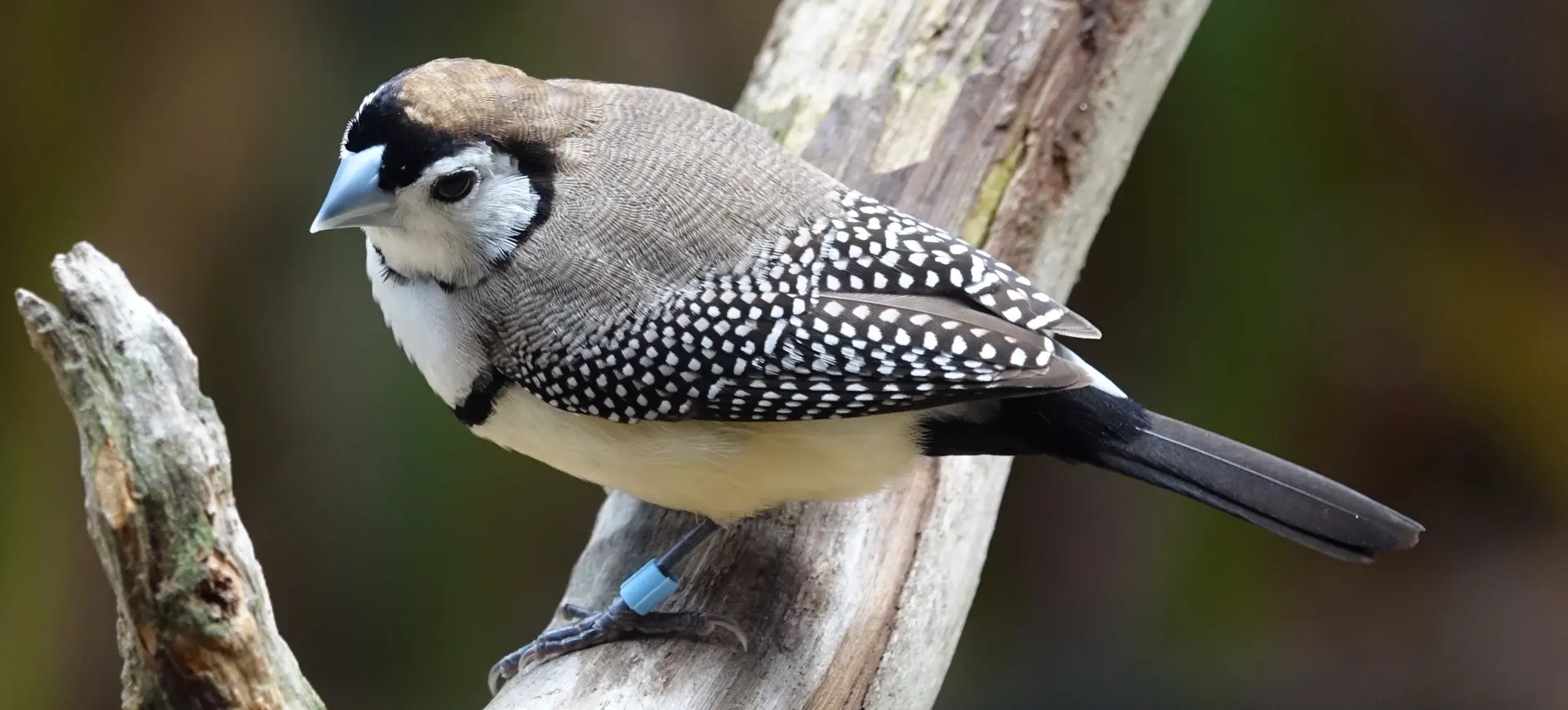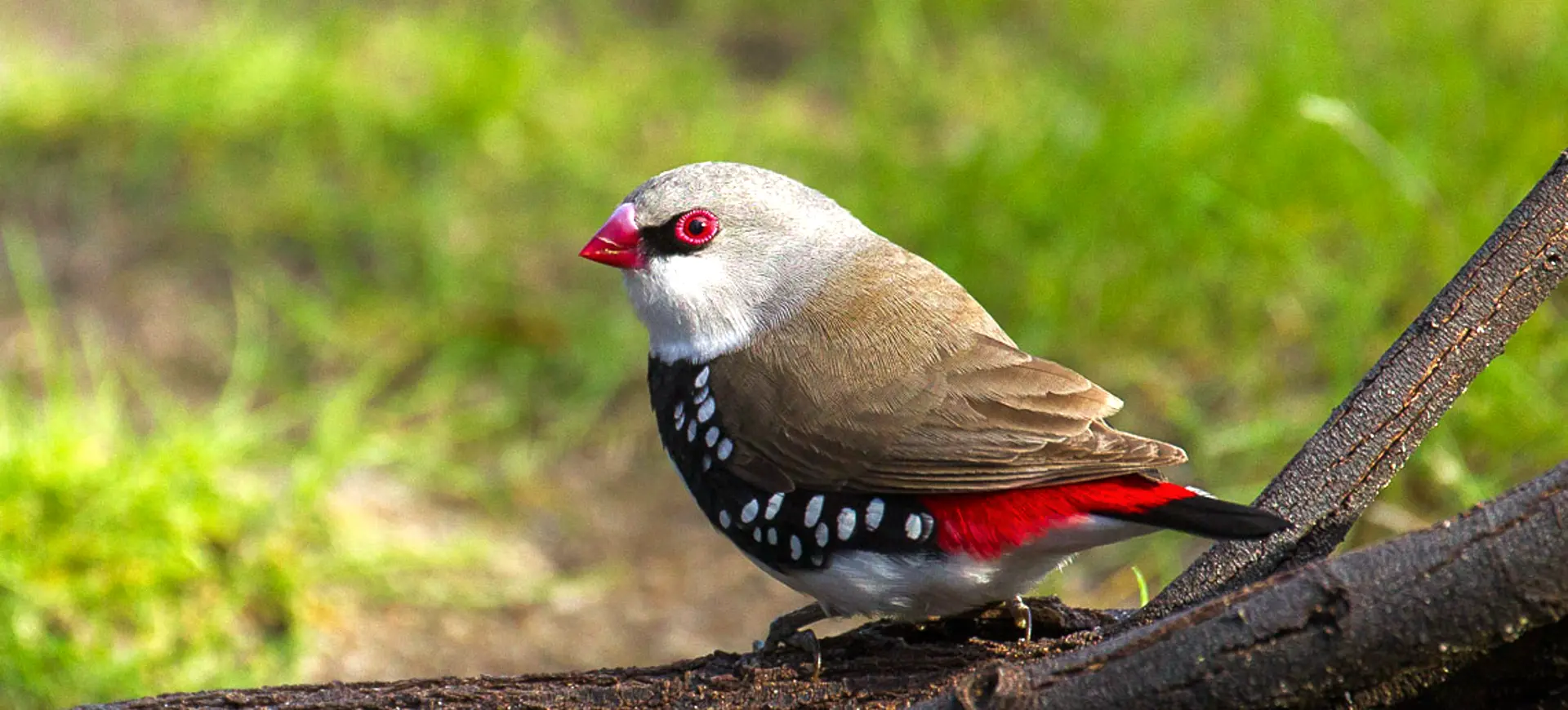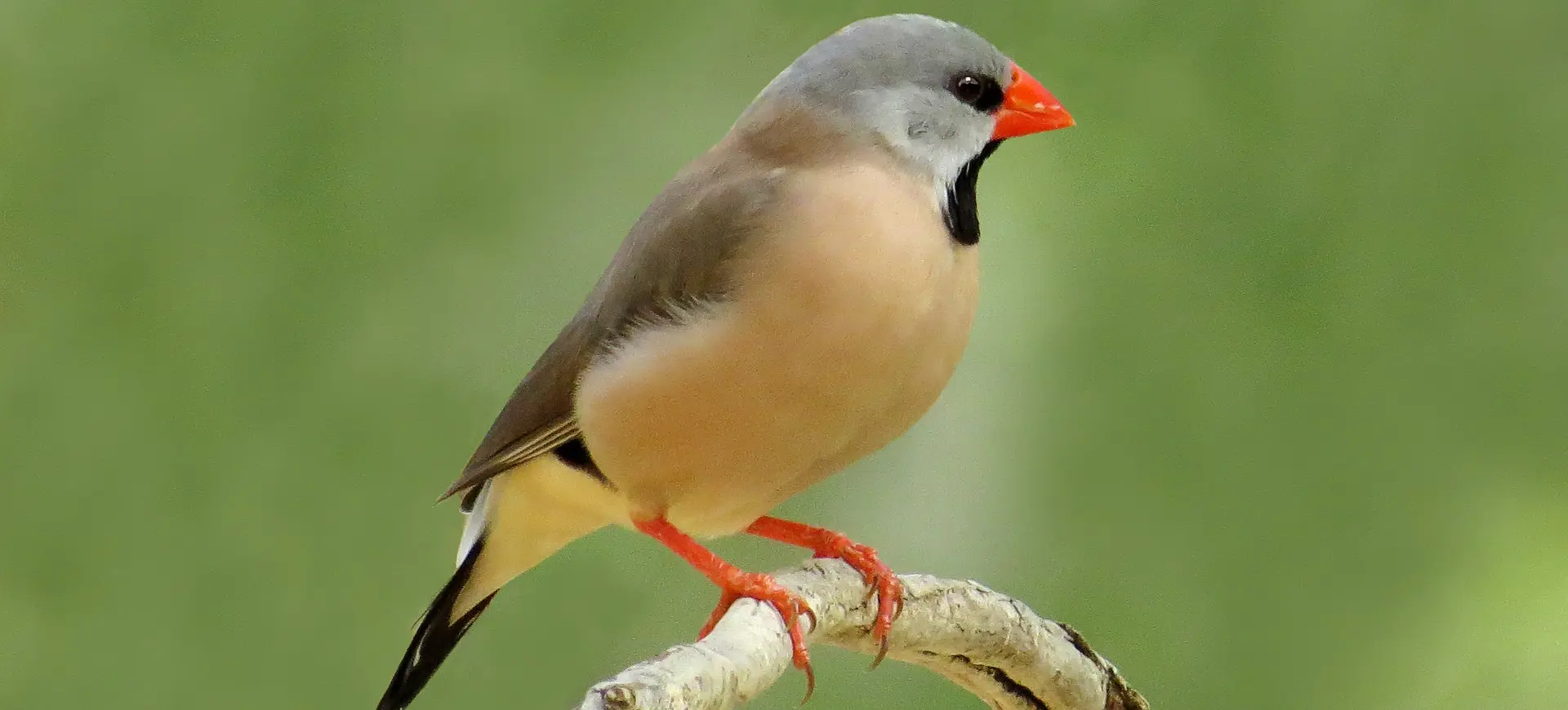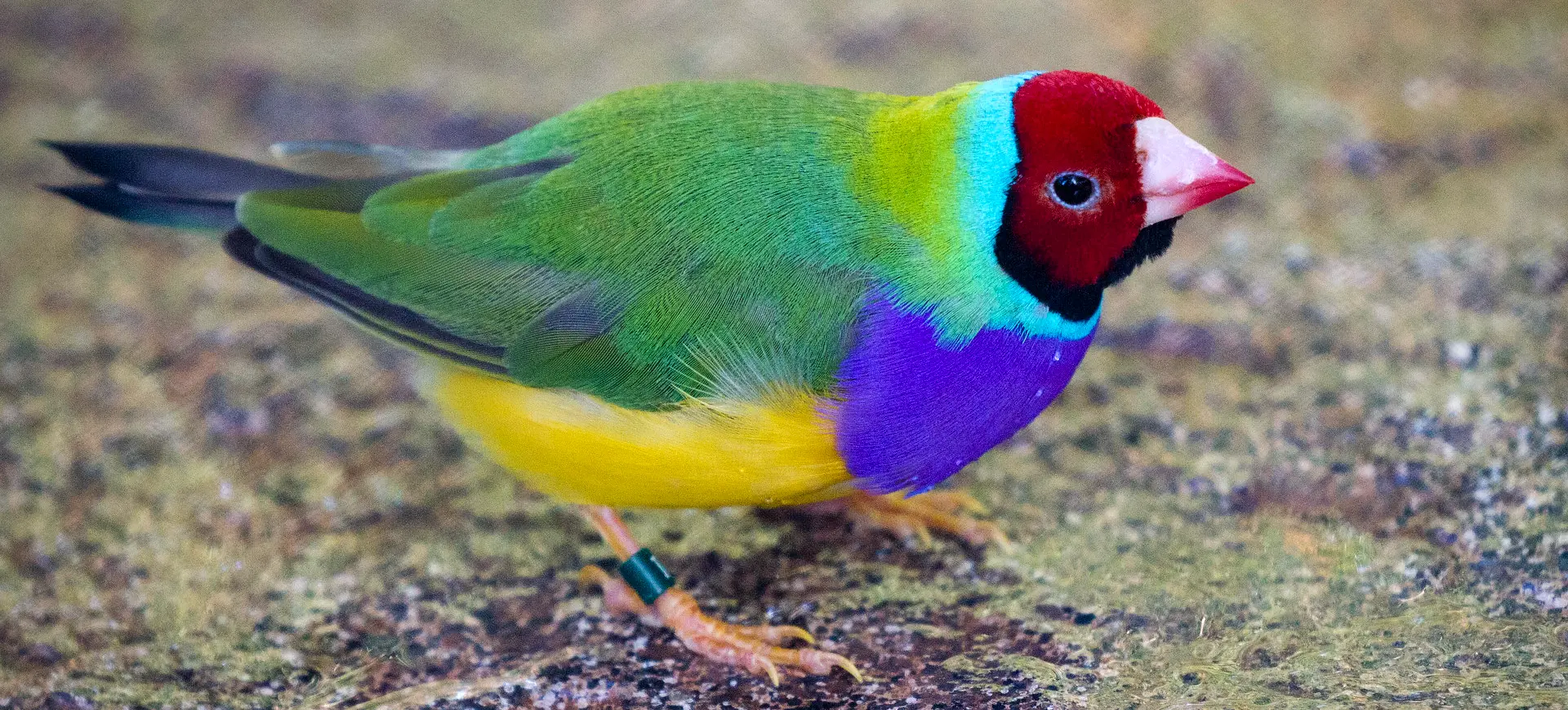Overview
The Orange-breasted Waxbill (Amandava subflava) is a small, vibrantly colored passerine bird native to sub-Saharan Africa. This species is easily identifiable by its bright orange breast and belly, contrasting sharply with its dark brown back and wings. The bird’s face features a distinctive red ring around the eye, adding to its striking appearance. Orange-breasted Waxbills are social birds, often found in small flocks, frequenting grasslands and marshy areas where they feed primarily on grass seeds and occasionally insects.
The species exhibits sexual dimorphism, with males displaying more vivid coloration than females, particularly during the breeding season to attract mates. These birds are known for their intricate nests, which are spherical structures with side entrances, woven from grasses and other available materials. They are adaptable and can also thrive in man-made environments, such as gardens and agricultural fields, where water and food sources are abundant. Despite their small size, Orange-breasted Waxbills are quite resilient, navigating through their habitats with agility and precision.
Conservation efforts have deemed the Orange-breasted Waxbill to be of Least Concern, although habitat destruction and pet trade pose ongoing threats to their populations. These birds contribute to the biodiversity of their ecosystems, playing a role in seed dispersal and providing a food source for predators. In captivity, they are popular among aviculturists due to their vibrant colors and relatively easy care, thriving in environments that mimic their natural habitats.
Taxonomy
Kingdom
Phylum
Class
Order
Family
Genus
Species
Type
Physical Description:
Orange-breasted Waxbills are diminutive birds, measuring about 3 to 4 inches in length, which makes them one of the smaller species within the estrildid family. Their weight ranges between 0.28 and 0.32 ounces (8 to 9 grams), showcasing little variation between males and females. The birds exhibit a round body shape, short tails, and a fine, pointed beak adapted for seed-eating. Their legs and feet are a light pink, providing a subtle contrast to their vivid body coloration.
The vibrant plumage of the Orange-breasted Waxbill is not just for display; it also plays a crucial role in their mating rituals and territorial defense. The males’ brighter colors serve as signals of fitness to potential mates, while the more subdued tones of the females aid in camouflage, especially when incubating eggs or tending to their young. Juvenile birds resemble females in coloration but are generally duller, gaining their full colors after their first molt. Their small size and agility aid in evading predators and maneuvering through dense vegetation in search of food.

Lifespan: Wild: ~5 years || Captivity: ~8 years

Weight: Male & Female: 0.28-0.32 oz (8-9 g)

Length: Male & Female: 3-4 in (7.5-10 cm)

Wingspan: Male & Female: 4-4.5 in (10-12 cm)
Characteristic:
Native Habitat:
The native habitat of the Orange-breasted Waxbill spans across a wide range of sub-Saharan Africa, from Senegal and Ethiopia in the north to South Africa in the south. They predominantly inhabit grasslands, marshes, and savannas, with abundant tall grasses and water sources. These birds prefer dense vegetation that offers food and protection from predators.
Their habitats are characterized by a mix of open land and brush, providing the necessary resources for nesting, foraging, and social interaction. Orange-breasted Waxbills are also found in agricultural lands and gardens, adapting well to human presence if their basic needs are met. Despite their wide range, habitat loss due to agriculture and urbanization is a concern, although they are currently not considered at risk.
Climate Zones:
Biomes:
Biogeographical Realms:
Countries:
Diet:
Diet & Feeding Habits:
Orange-breasted Waxbills primarily feed on a diet of grass seeds, showcasing their adaptation to the grassland habitats they often inhabit. They are known to forage in small groups, utilizing their sharp beaks to deftly extract seeds from grass stems and heads. During the breeding season, their diet is supplemented with small insects, providing the necessary protein for egg development and chick growth.
These birds exhibit foraging behaviors that are both opportunistic and strategic, often taking advantage of the seeding times of different plant species throughout the year. They are also frequent visitors to garden bird feeders, where they consume millet and other small seeds. Their water intake is significant, necessitating daily access to fresh sources, which they find in dewdrops, ponds, and streams. The adaptability of their diet has allowed them to thrive in both wild and urbanized areas, contributing to their stable population numbers.
Mating Behavior:
Mating Description:
Orange-breasted Waxbills engage in monogamous relationships, with pairs forming strong bonds often maintained throughout the breeding season. The breeding season coincides with the rainy season, providing abundant resources for nest building and feeding offspring. Males perform a series of courtship displays, including song and plumage displays, to attract females.
Nests are meticulously constructed by males and females, crafted from grasses and lined with softer materials for insulation and comfort. The female typically lays between 3 and 6 eggs per clutch, which are incubated for 11 to 13 days before hatching. Both parents are involved in the feeding and care of the chicks, which fledge the nest approximately 17 to 20 days after hatching, highlighting the species’ cooperative breeding behavior.
Reproduction Season:
Birth Type:
Pregnancy Duration:
Female Name:
Male Name:
Baby Name:
Social Structure Description:
Orange-breasted Waxbills exhibit a social structure that includes both solitary and group behaviors. Outside of the breeding season, they can be found in small flocks, foraging and moving together, which provides safety in numbers from predators. These groups are often mixed with other small seed-eating bird species, forming a communal environment that benefits all participants.
There is minimal aggression within these flocks, and the birds communicate through a series of chirps and calls that coordinate their activities. During the breeding season, pairs become more territorial, defending their nesting sites from intruders. The social dynamics of Orange-breasted Waxbills reflect their adaptability and resilience, enabling them to thrive in various environments.
Groups:
Conservation Status:
Population Trend:
The Orange-breasted Waxbill’s population in the wild is considered stable, with no immediate threats that could cause a rapid decline. Their wide distribution across sub-Saharan Africa and adaptability to various habitats contribute to their resilience. In regions where natural habitats are preserved or minimally impacted by human activity, populations tend to be healthier and more dense.
Urbanization and agricultural expansion pose potential threats to their habitats, although the species has shown a remarkable ability to adapt to altered landscapes. In areas where natural grasslands have been replaced by agriculture, Orange-breasted Waxbills often utilize crop fields for foraging, demonstrating their versatility. Conservation efforts focus on habitat preservation and controlling the pet trade to stabilize their populations.
Population Threats:
Habitat destruction and the illegal pet trade are the primary threats facing the Orange-breasted Waxbill. Urbanization and agricultural expansion lead to the loss of natural habitats, reducing the available space for these birds to live and breed. Additionally, their striking appearance makes them targets for capture and sale in the exotic pet market, which can deplete local populations.
Climate change poses a long-term threat by altering the ecosystems they depend on, potentially affecting food availability and nesting materials. Predation by domestic cats and invasive species in some areas also contributes to population pressures. Despite these challenges, their widespread distribution and adaptability have enabled them to maintain stable populations in most of their range.
Conservation Efforts:
Conservation efforts for the Orange-breasted Waxbill primarily focus on habitat conservation and the regulation of the pet trade. Protected areas and nature reserves play a crucial role in preserving the natural habitats of these birds, offering sanctuaries where they can thrive without the pressures of habitat destruction and human encroachment. Education and awareness campaigns help reduce the demand for wild-caught birds in the pet trade, promoting captive breeding as an alternative.
Research and monitoring are important to understand the species’ ecology, distribution, and population trends, informing conservation strategies. Community-based conservation initiatives that involve local populations in habitat preservation efforts have shown promise in mitigating the impact of agricultural expansion. International cooperation is also vital, as the species’ range spans multiple countries, requiring coordinated efforts to protect them across borders.
Additional Resources:
Gallery Images Courtesy of Derek Keats
Fun Facts
- Orange-breasted Waxbills can consume their body weight in seeds each day.
- Other bird species often reuse their nests after they have vacated.
- Despite their small size, they can have long flights, especially when migrating between feeding and breeding areas.
- The color intensity of a male’s plumage can influence his success in attracting a mate.
- They have a distinctive high-pitched call that can be heard over long distances.
- Juveniles are fed a diet rich in insects, providing them with the necessary proteins for rapid growth.
- Orange-breasted Waxbills have been observed bathing in dew-covered grass, which aids in feather maintenance.
- They can rapidly breed, with multiple broods raised in a single season under optimal conditions.
- In captivity, they can live up to 8 years, although their lifespan in the wild is typically shorter.
- The species plays a role in their ecosystems as both prey for larger birds and as seed dispersers, contributing to the health of their habitats.








